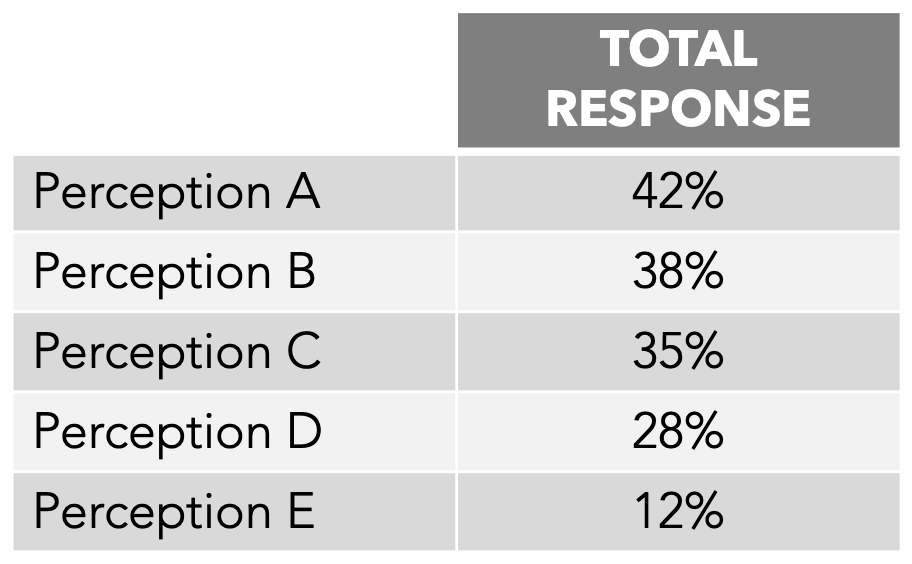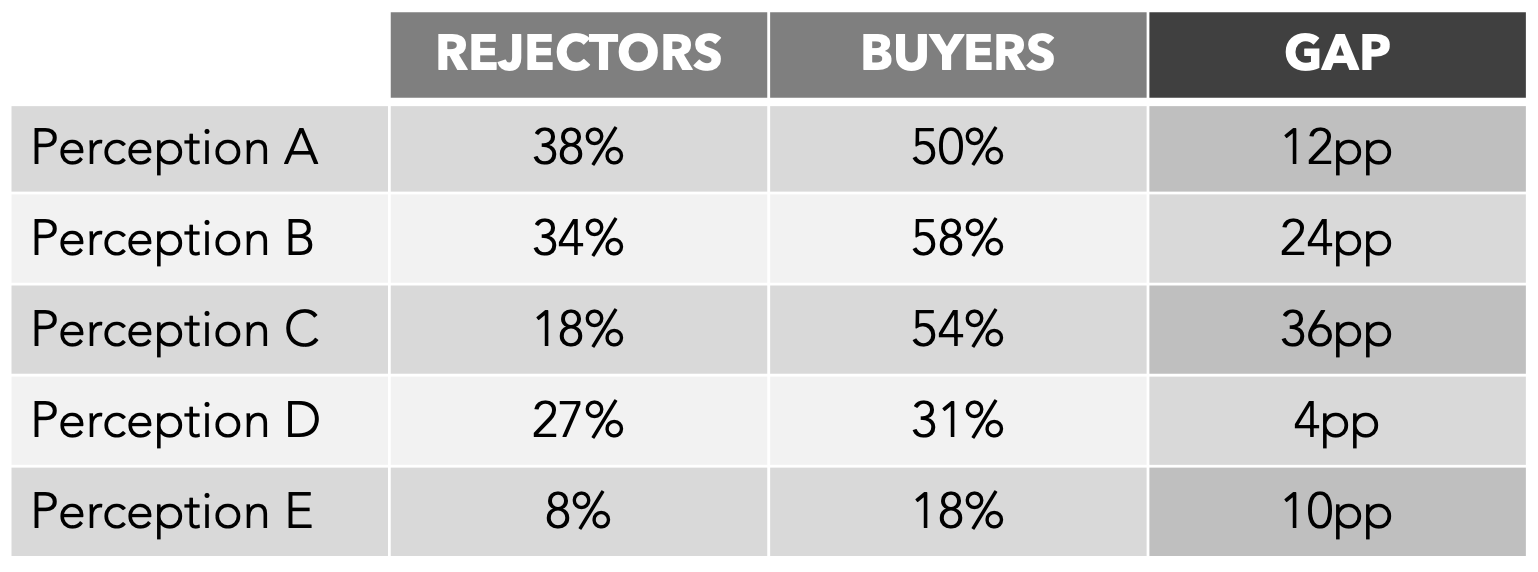01 July 2021 Turn non-buyers into buyers by finding what makes them different
Sometimes you come across something which is so obvious you feel stupid in hindsight.
Like Stephen Fry’s movement encouraging parents to Turn on the Subtitles when children are watching TV. Of course!
Another was when I first stumbled across the forgotten art of Acceptor/Rejector Analysis.
I realised, the way we analyse brand health market research is wrong.
You survey a sample of the target audience to better understand your brand funnel (awareness, consideration, etc.) and brand perceptions. The latter helps you understand how much people associate different attributes with your brand.
Normally it looks like something like this example. Sometimes it’s presented in a fancy spider chart.

The problem with brand associations
When presented with the data above, you might make a decision to double down on your strength (Perception A), or focus to repair a weakness (Perception E). Or if you compare the same attributes with competitors, you might identify white space to go after that.
But there’s two issues with this:
Firstly, it doesn’t tell you which perceptions matter to consumers. Your brand might have strong associations with “is a brand you can share with friends” but this perception might be meaningless in influencing decisions. Likewise you may under-index in “is an Australian brand”, but there’s no value in addressing it.
It’s not uncommon to have complementary research where you ask consumers which factors matter to them when making a purchase. But we know what people say and what people do are almost always different.
Secondly, the brand associations above are averages. This data includes both your most loyal heavy buyers, and those who despise you. Hardly useful.
Finding what matters by analysing the differences
To overcome these issues, we do Acceptor/Rejector Analysis. Rather than look at brand associations as whole, we split the data into two cohorts:
- People who are aware of you but not buyers, let’s call them Rejectors.
- And buyers, let’s call the… Buyers.
To turn the Rejectors into Buyers, we look at what makes them different. And we close the gap.
Here’s what the same data above looks like when it’s split out:

We’re less interested in the absolute numbers of each cohort, but rather, the biggest gap between them.
In the case above, a new insight emerges. Perception C was something we’d ignored to date – not quite a weakness and not quite a strength. But once we split it across the two cohorts, we see it is our most polarising brand association. The biggest difference between Buyers and Rejectors is the one we want to focus on.
So you would build a campaign to tackle Perception C.
The best part, this analysis you can often do for free using an old brand health study. No extra cost, just 15 minutes to cut the data in a new way.
Watchouts on Acceptor/Rejecter Analysis
There’s two things to keep in mind when looking at the gaps:
Firstly, sometimes people have a good reason to reject your brand. If you’re a brewery you probably aren’t interested in perceptions among Coeliacs. Avoid this by filtering responses for people who aware of you AND who don’t buy you AND who buy your competitors.
Second, as Jon Bradshaw reminded me, behaviour isn’t linear. People don’t always think or feel first, then act. Often it’s the other way around – your thoughts and feelings change after you take action. Cognitive dissonance means we’re great at post rationalising, and why some suggest the fastest way to change behaviour is action first, then thoughts and feelings take care of themselves.
As George Box said: “All models are wrong, but some are useful.”
Zac Martin is a Planning Director at Ogilvy Melbourne. This article was originally published in CMO Magazine.

No Comments